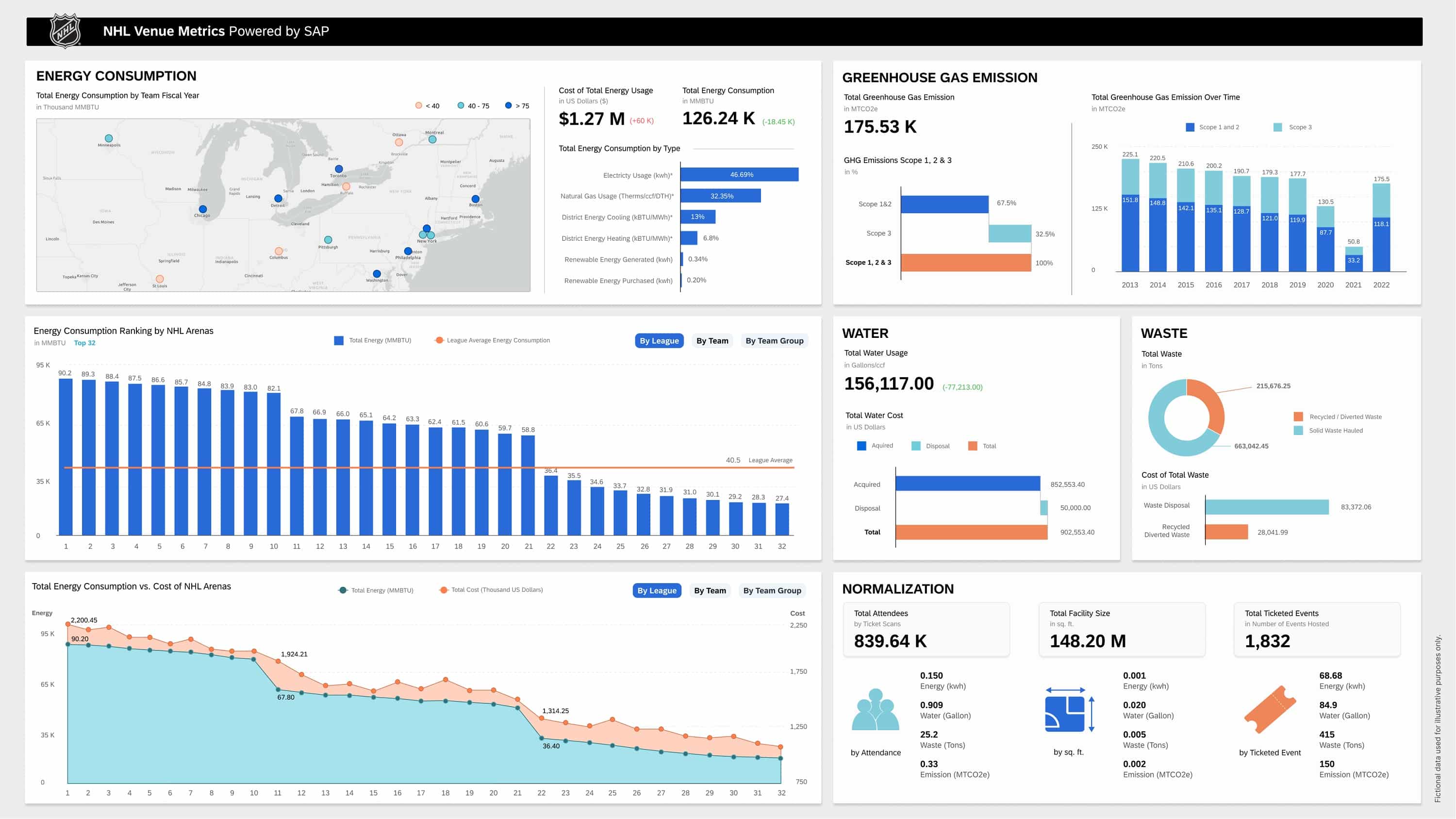Given that more than 45% of CO2 emissions, a key contributor to global climate change, are due to electricity and heat production, reducing the carbon footprint is one of the most effective ways to reduce global warming. To help lessen carbon footprint and mitigate the impact of global climate change, SAP and the NHL have created a new platform called NHL Venue Metrics, powered by SAP.
This end-to-end, cloud-based platform developed by SAP enables the NHL to measure and analyze the carbon footprint generated by its Clubs and arenas across various areas, including energy, water, waste, and recycling. These insights will allow the NHL to advance and achieve its sustainability objective of reducing its ecological impact where possible while ensuring the sport thrives for future generations.

The NHL determined that its Clubs’ venue operations comprise approximately 70% of the League’s overall carbon footprint. The League tasked SAP to help find a technology solution that seeks to reduce its impact and protect the sport’s roots. The result was a data-driven platform that is available to all Clubs and their arena partners to transform and ultimately help to advance the League’s environmental sustainability objectives.
“For years the NHL has been on a journey to embed sustainable business practices across the League and its member Clubs,” said Omar Mitchell, NHL Vice President of Sustainable Infrastructure and Growth Initiatives. “The NHL Venue Metrics tool is a true game-changing innovation to help us understand our environmental impacts and create viable insights to improve our ecological impact.”

NHL Venue Metrics consists of three main components:
- Data Collection: An interface platform between the Clubs and their venue partners enables them to share relevant resource consumption and environmental data with the League.
- Data Calculation and Validation: The processing and verification engine allows the League to track data consistency and identify reporting errors and calculation formulas to create the League’s carbon inventory.
- Data Reporting and Insights: A visualization dashboard showcases relevant environmental, consumption, and financial insights at both the enterprise level and Club level of the various metrics that would inform the known carbon impacts of the NHL.
The technology behind NHL Venue Metrics, powered by SAP, derives powerful analytics from one of the most advanced databases, marking the League’s latest and extended use of SAP Business Technology Platform (SAP BTP). Throughout the SAP/NHL partnership, SAP BTP has been at the forefront of the League’s co-innovation efforts across multiple areas of their business. The operational data collected from Clubs will be processed using SAP HANA Cloud and visualized with SAP Analytics Cloud. Insights from the platform will support the NHL in identifying environmentally focused trends, sharing critical learnings shaped by those trends, and ultimately implementing best practices across Clubs to reduce the League’s collective ecological impact.
“At SAP, one of our priorities is providing partners with sustainable technology solutions so they can track and incorporate feasible goals for their business,” said Amy Schulz, senior director of Global Sponsorships at SAP. “The NHL is a longstanding co-innovation partner of ours. With its cloud software foundation built on SAP BTP, we could not only develop a custom solution to meet its business objectives, but the solution will come at no cost to the Clubs. It’s a huge step forward as the NHL looks to decrease its carbon footprint and improve sustainable efficiencies.”
In September 2022, the NHL invited all Clubs and arena operators to use the platform and input historical data from 2018 through mid-2022 to analyze and identify an appropriate baseline. With the inputs from Clubs, the implementation of NHL Venue Metrics powered by SAP is already underway this current season, helping the League get one step closer to a more sustainable operation.



